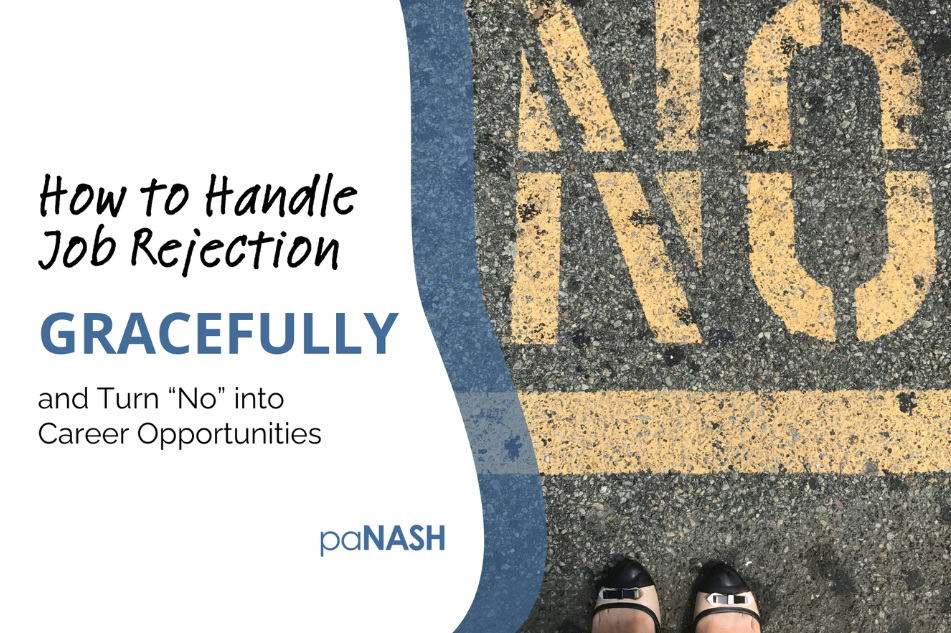|
|
Getting rejected after spending time preparing for several rounds of job interviews stings. Especially in mid-career, when you’ve built experience, refined your skills, and maybe even thought a role was perfect for you. But here’s the truth: rejection isn’t a reflection of your worth. If handled correctly, it can be turned into opportunities.
Here’s how to turn a “no” into a learning experience, a networking connection, and a stepping stone toward your next win.
Turning rejection in the job search into a win
1. Reframe rejection
First things first: shift how you think about rejection. Don’t view it as failure. Instead, view it as feedback you can put to good use.
Jobs are rarely lost because you aren’t qualified. Often, timing, internal candidates, or sheer luck play a role. Instead of thinking, “I didn’t make it,” try, “I learned something that will help me land the next opportunity.”
This mindset reframe is subtle but powerful, and can transform disappointment into insight.
2. Respond professionally
When you receive a rejection email, resist the urge to disappear or vent online. A gracious, short reply keeps the door open and leaves a positive impression.
Here are a few examples you can adapt depending on the situation:
Simple and gracious: “Thank you for letting me know. I enjoyed learning more about your team and appreciate the opportunity to interview. I hope we can stay in touch for future opportunities.”
Highlighting continued interest: “I appreciate the update and the chance to interview. I remain very interested in [Company Name] and would welcome any future opportunities to contribute.”
Friendly and concise: “Thanks for letting me know. I really enjoyed speaking with the team and hope to cross paths again in the future.”
Keeping the door open for networking: “Thank you again for your time and insight. I’d love to stay connected and keep in touch about future collaborations or industry conversations.”
Requesting feedback: “Thank you for the opportunity to interview. I’d love to learn how I can improve for future opportunities, and any feedback would be greatly appreciated. I hope we can stay connected.” (Note: you may not get a response to this due to the potential legal risk for the company.)
Sending your reply within 24 hours shows professionalism. It also positions you as someone people want to work with, even if this role wasn’t the right fit.
3. Build your network
A rejection doesn’t have to mean a closed door. You can still connect with the recruiter or hiring manager on LinkedIn if you haven’t already. Send a short thank-you note and keep the relationship alive.
Over time, these connections can possibly lead to other opportunities in the same company, provide referrals in your industry, or offer mentorship or advice.
Think of every rejection as a chance to expand your professional circle.
4. Turn rejection into action
Rejection can be a springboard for growth.
You can improve your skills by taking a mini-course, working on a project, or volunteering to fill gaps. You can update your resume or LinkedIn profile with recent achievements. And you can treat each rejection as rehearsal for your next interview.
Even small adjustments compound over time, making you a stronger candidate.
5. Reflect and celebrate
Finally, take a moment to ask yourself, “What did I learn from this process and how can I apply it moving forward?”
Celebrate your resilience, knowing each rejection you gracefully navigate strengthens your professional reputation and your confidence.
Remember: some of the best career breakthroughs happen after a string of “no’s.” You just have to handle them appropriately and strategically.
Next steps
If turning rejection into growth feels tricky, you’re not alone. I work with people from a wide variety of industries to navigate job searches, handle setbacks, and position themselves for roles which actually fit.
Start small by responding graciously to your next rejection and tracking what you learn. It’s your roadmap to landing the opportunities you deserve.
For customized assistance, you can schedule a complimentary initial consultation by completing the paNASH intake form (click here).





